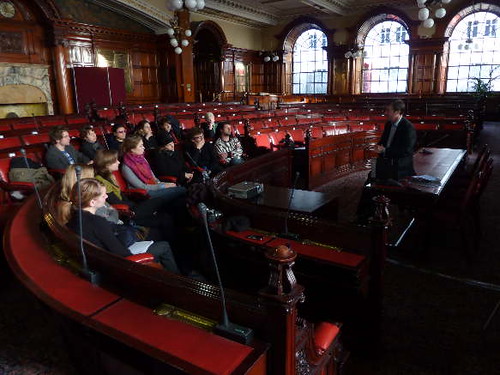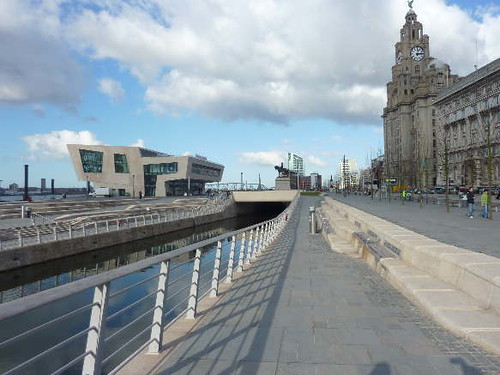We spend an interesting day in Liverpool on Wednesday the 10th of February 2010.
We started with
a friendly reception in Liverpool’s Town Hall where Neil
Peterson, from the Liverpool City
Coucil/Liverpool Culture Company gave us
an informative and detailed account of Liverpool’s recent
transformation and
the role of Liverpool Culture 2008, the European Capital of Culture
scheme,
for the city’s urban regeneration.

After Neil’s presentation, we had the pleasure to explore Liverpool’s past
and present
architecture. Robert Burns, one of the city’s leading urban
planners, guided us through
Liverpool’s commercial district and the
transformed waterfront area which has been the central
feature of
Liverpool’s cultural regeneration. Passing the recently completed Liverpool
Museum and the Albert Docks the guided tour concluded with a walk through
Liverpool One the city’s
new retail quarter. Robert’s explanations of the
contemporary and historic
built environment were most valuable and helped us to understand the
relationship between
architecture, design and context as well as the
importance of architectural spectacle (or theatre
as he called it) to create
interesting, inviting and changing experiences of urban landscapes.

In the afternoon, Claire Bullen, a researcher from the University of
Manchester, took us to areas
on the outskirts of the city centre. After
walking through the Ropewalks, the recently designated
creative quarter of
the city, passing China Town, the city’s cathedrals and university
district
we took the bus to Edge Hill, a deprived neighbourhood of Liverpool and
which has
been undergoing housing renewal and regeneration initiatives for a
number of years. Here we were
hosted by Vinny Lawrenson Woods from
Culturepool and Jenny Porter from Metal at the newly restored arts space at
Edge Hill Station. We finished our
day discussing the innovative role played
by grass roots cultural organisations in engaging people
from across the
city in cultural activities and the difficulties faced by smaller
organisations in securing funding they need to achieve their goals.

Many thanks to Claire Bullen, Neil Peterson, Robert Burns as well as Jenny
Porter and Vinny
Lawrenson Woods.
